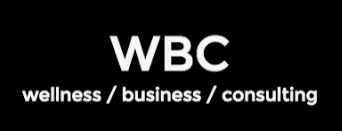Your customers and clients may be experiencing more stress these days, giving your small business an opportunity to cater to their wellness needs.
Stress has always been a driving force in the wellness industry, but we seem to have moved past just personal stress to a collective, politically-induced stress. No longer are people simply seeking to remedy relationship or financial troubles; stress about politics and the security of the future is becoming more and more common. As a business consultant for wellness practices and the owner of two massage studios in New York City, I have seen this trend unfold firsthand.
Like many, I was exhausted by last year’s tumultuous election, so imagine my surprise when I learned that it was actually great for business. I first noticed an uptick in client bookings in the fall of 2016 and my sessions — which are typically pretty quiet — became more lively as clients voiced their worries and concerns about politics. Stress and anxiety commonly manifest themselves in physical ailments like muscle tension, TMJ (jaw tension from teeth clenching), headaches, insomnia and fatigue, which are problems we treat frequently.
I had a feeling that trying to deduce electoral math and being glued to Facebook, cable news and Twitter were physically impacting my clients and the demand for my business. The numbers proved me right: We saw a 20% increase in new clients in Q4 of last year and in the week after the inauguration, we saw an additional 50% surge in bookings — and there’s no sign of it slowing down. The demand has been so high that we’re adding additional employees to our roster.
At the same time, I saw a growing trend in the corporate world as blue chip companies like Aetna and Facebook adopted progressive workplace wellness programs, and media mogul Arianna Huffington launched Thrive Global, a wellness company dedicated to helping companies and employees reduce burnout. At a time when people were dealing with a new kind of post-election stress, I felt wellness was reaching an audience that hadn’t previously been tuned in.
Growing a business isn’t without trial and error, and there are specific challenges that small practices should keep in mind when catering to stressed out clients. Keep these tips in mind to capitalize on the latest wellness trend:
Don’t Be Afraid of the Big Fish
Just because your business is small, that doesn’t mean you can’t work with a large company or corporation. Small businesses can reach new audiences and build partnerships by offering services to large companies and coordinating office wellness events. We have partnered with Red Bull, WeWork and Whole Foods to offer chair massages to employees for on-site stress relief.
Companies are interested in the benefits of having wellness services at work, which can keep insurance costs down and boost employee productivity. With just a few practitioners, your business can reach a new customer base that wouldn’t otherwise discover your practice. When approaching a new partner, make sure to tailor your approach and market the specific benefits that they can expect from working with you.
Diversify, Diversify, Diversify
At a time when customers are becoming savvier in the wellness space, it’s important to diversify your services. Consider including massage, reflexology, acupuncture, aromatherapy, reiki and alternative wellness treatments. Before seeking new talent, look at the expertise you already have in house: Many practitioners are trained in multiple disciplines but don’t always promote all of their areas of expertise.
You Absolutely Cannot Skimp on Talent
This is imperative. For small businesses to stand out in the wellness space, it’s critical to hire excellent staff members who can provide high-quality care. This is important for all service-based industries, but even more so for practitioners who have close relationships with their clients. This is the easiest way to keep retention rates up and your clients coming back.
To make sure that your guests are getting the most out of their experience, consider using client feedback software or post-treatment surveys. A great practitioner will have a consistently high client retention rate.
Focus on Consistency
One of the biggest challenges small businesses will face as they grow in the wellness space is maintaining consistency and a high caliber of customer service. Our clients know exactly what to expect from each visit, so we are confident they will want to return. Having a clear manual of operations goes a long way in helping keep things running smoothly, and I always encourage clients to speak up if they are unhappy with their service.
Aim to Exceed Client Expectations
When your goal is to help your clients cope with pain and stress, I encourage my team to aim to exceed a client’s expectations. Just because you provide excellent service, that doesn’t mean their ailment will vanish, so we provide clients with additional information and therapy for self-care at home. I’ll frequently recommend specific stretches or strengthening exercises that become integral to a client’s daily routine. We also collaborate with other practitioners, such as acupuncturists, chiropractors, physical therapists and pilates instructors. It’s important to create an atmosphere where practitioners feel like they can and should go the extra mile for their clients.
Though there is uncertainty about the future, it appears that the trend toward wellness is here to stay.
Published on 9/6 in Business Collective



